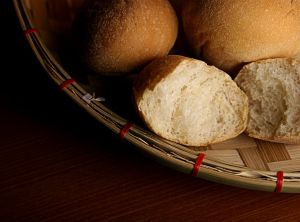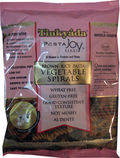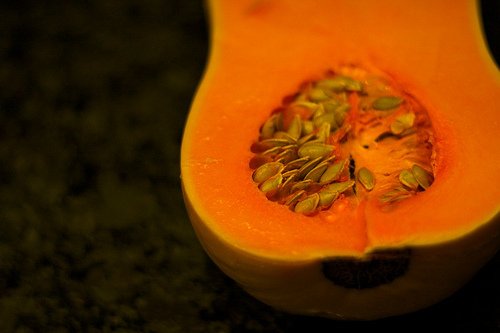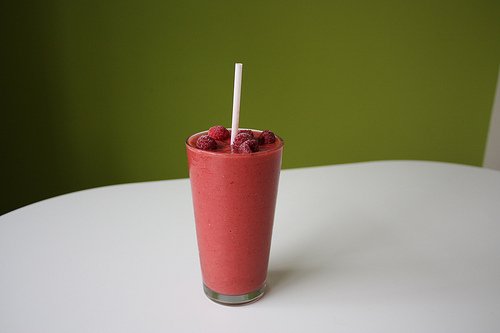Nutritional Foundations- Making the best of the regular grocery store, Part 6
Whew… the next time I start a series with such a loooong title, can someone just email me and say "Steph, seriously, what are you thinking?" 🙂
This series will be drawing to a close fairly quickly, and not a moment too soon, as I have other series ideas just bursting at the seams, but I can only juggle so many series at once (there's also my PCOS series, which has a long ways to go yet). This week, I'm tackling the bakery section and grains products in general. Next week, I'll move on to those pesky inner aisles of the store.
Finally, I'll spend a week compiling all of the resources I can possibly come up with, to help you move beyond the regular grocery store and start exploring the alternative sources of fabulous, frugal, local and natural food that you just don't know about yet! On that note, if anyone has any great websites or resources to pass on to me for that post, please start emailing them to me now at keeperofthehome (at) canada (dot) com and I'll be sure to include them in my post, and give you some linky love as well.

Anyhoo, let's get on with the topic at hand… the Bakery!
For those who read my blog or other "Nourished" bloggers (aka Kimi, Lindsey, Michelle, Donielle, etc.) you may wonder if baking your own bread and baked goods is the only possible option. Let's explore that for a few minutes.
The three basic concepts that should inform our choice of bread and other such grainy gifts of God (yes, I love carbs!) are that they be:
1) Soaked
2) Sprouted
3) Sourdough
If you're wanting to know more about the why's behind this, I would read this article, and then also this post and this one.
I can tell you straight away that you won't be finding soaked grain products in your local store, so let's just clear that option right off of the table.
Sprouted

Moving on to #2, we've got something that we can begin to work with. I don't know exactly what's available in the conventional stores that are local to each of you, but I'll tell you what we have where I live, and also in Washington, where I shop fairly frequently.
Sprouted is the new whole wheat, or so it seems. It's not good enough just to be brown, but now lovely loaves of sprouted, "flourless" or Squirelly bread are popping up everywhere. This, my friends, is a very good thing! Yes, they are still made with wheat (but whole wheat). Yes, some of them still have oils in them that I wouldn't favor, some preservatives and quite possibly some sugar to boot. No, they're not as fresh as if you made them yourselves, and many of them aren't organic (though happily, many of them are!).
I would, however, take these breads above a plain old whole wheat loaf (regardless of how wholesome and hearty it is) any day, and here's why. The fact that the grains are sprouted means these breads are far more digestible than your average grocery store bread. In fact, I know many people who don't really do well with most wheat breads at all, but these sprouted grain breads actually sit pretty well with them.
They are easier on your system, allow more nutrients to be absorbed and retained by your body, and are often not accompanied by the sluggish digestion, bloating and other signs of food sensitivity that many have when they eat wheat bread (you might not recognize that these things occur, but in actuality, it is quite likely that your body isn't doing as well on yeast-risen whole wheat bread as you'd like to hope it is).
Sourdough
What about option #3? Again, this will depend on your store's bakery section, but many of the stores that I know carry a few varieties of honest-to-goodness sourdough bread. It's often hearty, dark rye, or rye mixed with wheat (though I'm blessed to also have a spelt/wild rice option at my local Superstore). Sadly, the white bread labeled "sourdough" is usually not a real sourdough, though I do admit, I used to really love the stuff.
What you want to look for is a bread that is using a sourdough starter, or natural leavening, and that doesn't include yeast in the ingredients (it will usually just have flour, salt, water and not a whole lot else). If it does have yeast in it and if it's quite light and fluffy, then the sourdough is usually for flavoring only, and it has been made in the quick-rise style of regular yeast breads. What we're going for here is bread that has been made in a more traditional sourdough method, which include very long rising periods (usually something like 12-48 hours).
Beyond bread
Again, based on these criteria, if you can find any bagels or English muffins or tortillas or anything of that nature that fit the bill (as in, sprouted or sourdough), consider yourself blessed! Naturally, as always, organic is a better choice than not. Do the best you can do with what's available, and know that sticking to sprouted and sourdough will at least ensure that what you're buying is as nourishing and easy on your digestive system as possible, whether it's organic or not.
Pasta
So sadly, pasta falls under the category of grains that are prepared improperly. However, this doesn't mean that you have to get rid of pasta entirely, and there may be a few options even within your local grocery store.

Rice pasta is probably one of the best and most available options out there. Compared to most grains, rice is generally must easier to digest (without going through the soaking or sprouting process), making this a great compromise. With the rise in gluten free diets, rice pasta is becoming much more accessible. My favorite brand is Tinkyada, hands down. It comes in every shape and size, and keeps a much nicer texture than most, though any rice pasta will do, nutritionally speaking. Another great option, though it's not available everywhere, is a sprouted grain pasta (made with wheat, not rice), such as the ones available from Food for LIfe. If neither of these are available to you, you could consider just purchasing whole grain flour and making this recipe that I'm dying to try.
If none of these options are available, and you're just not willing to give up pasta (or make your own, and seriously, I wouldn't blame you if you weren't!), what can you do? I would choose a good quality whole wheat or organic pasta (whatever your local store offers), eat it infrequently, and when you do, make sure that you're including some other foods that will assist in your digestion (fermented or cultured veggies or dairy, bone broths in a soup or pasta sauce, a glass of water with apple cider vinegar or lemon before you eat, etc.).
Did I cover all of the grain products that you're wondering about? I will also touch on flours when I get into the grocery store aisles in my next post in this series.
What types of bread and grain products are available at your local stores? Any brands or stores to recommend to fellow readers?




I have already copied the pasta recipe from Nourishing Gourmet and am exited to use it.
I have also started soaking my flour, I am trying to slowly add these changes into my routine so I don’t get overwhelmed and burnt out. it is coming along slowly but still so much better then it was.
thank you for doing what you are doing
it is a great help to me.
I buy Healthy Way tortillas from Costco – they are organic and sprouted and very reasonably priced – so I feel like I can justify not learning to make my own for the moment. Plus they freeze really well so I just buy a big pile and always have them on hand. We’ve been eating a lot of them lately since my bread making adventures haven’t resulted in much except building material for an addition on our house 🙂
We haven’t been eating much pasta since I started learning about soaking/sprouting, but when I do buy it I purchase the PC Organics brand of rice pasta from Superstore. The price is really good compared to the other brands that I have seen. So far no one that I have served it to has noticed that it wasn’t “regular” pasta, though my dad did comment that he didn’t get the “gross and bloated” feeling that he normally from eating pasta.
I just wanted to second your recommendation of Tinkyada pasta. I’ve used it in pasta salads, soups, baked pasta dishes, etc. and it always, always, always turns out perfect (well, except that time I left it on the stove until the pot ran dry, but operator error doesn’t count.)
We live in Small Town, USA so our options are 100% whole wheat from the store or making our own when it comes to bread. We make our own. It has become part of our routine and I’ve gotten to where I really am picky about my bread now. For our pasta we drive to the nearest big city (about an hour) about once a month and stock up on things like pasta, coconut milk, and the like.